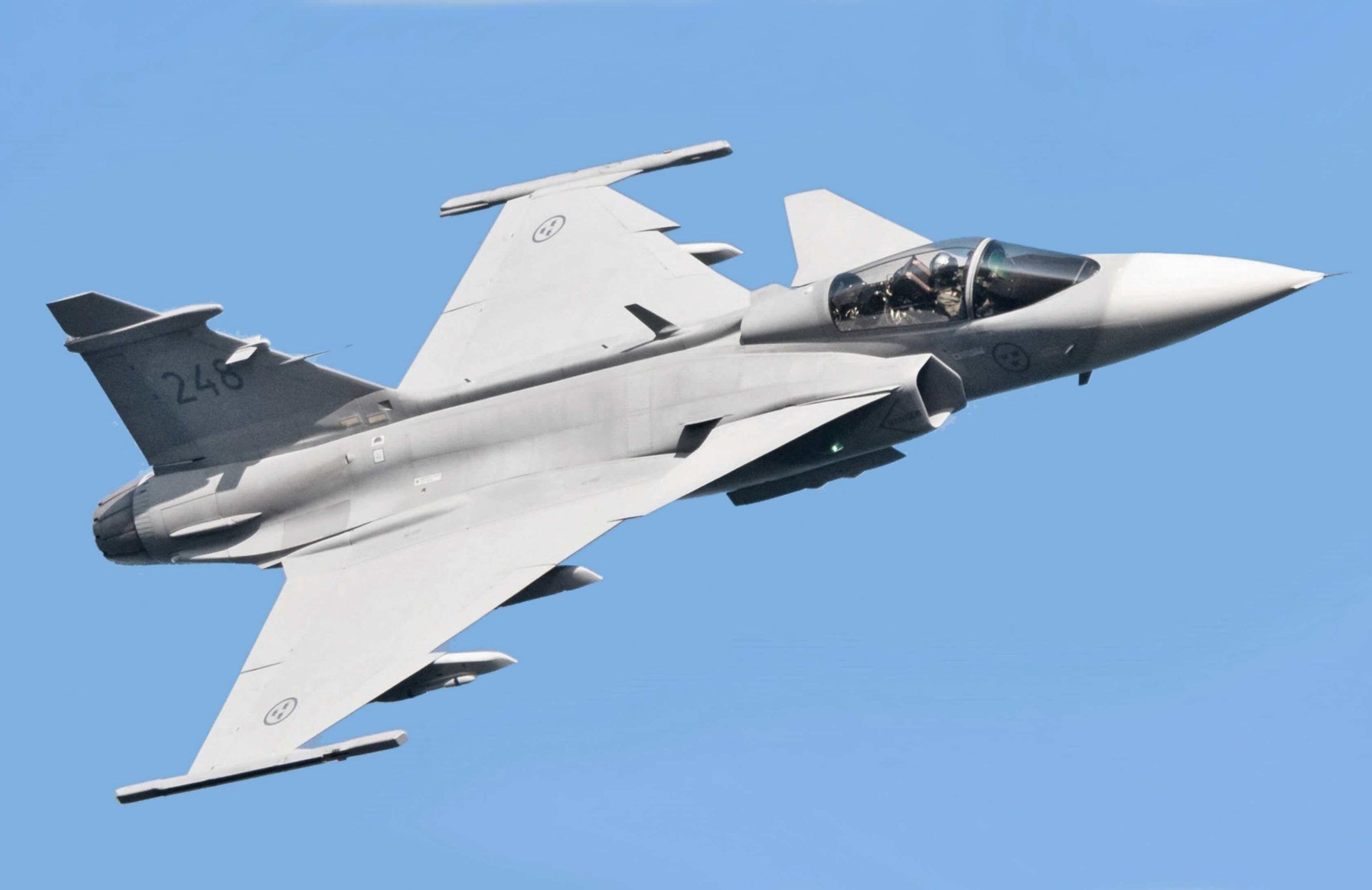


The aircraft identified were a Su-30, a Su-35 and three MiG-31s. The intercept occurred under NATO’s Baltic Air Policing mission.
Two Gripen fighters on @NATO Baltic #AirPolicing scrambled on 25 Sep from Siauliai in response to a Su-30, Su-35 and 3x MiG-31 flying close to airspace
demonstrates the Alliance’s commitment to protecting and safeguarding the Baltics and the eastern flank pic.twitter.com/EMG035s0qm
— NATO Air Command (@NATO_AIRCOM) September 25, 2025
According to reports based on the Allied Air Command statement, the Hungarian detachment launched after the Russian formation was detected transiting international airspace near Latvia without flight plans filed in the region’s civil air traffic system. Media summaries citing NATO Air Command said the Gripens conducted a routine visual identification and escort.
Hungary is currently the lead nation for Baltic Air Policing, a rotating NATO mission that provides quick-reaction alert coverage for Estonia, Latvia and Lithuania. The Hungarian Air Force assumed the role on 1 August 2025, deploying four Gripens and around 80 personnel to Šiauliai for a four-month rotation alongside Spanish and Italian aircraft.
Baltic Air Policing is a standing peacetime mission run by Allied Air Command at Ramstein, designed to ensure that NATO has fighters on immediate standby to identify and, if necessary, escort military aircraft operating near allied airspace. The mission has been continuous since the Baltic states joined NATO in 2004 and is frequently called upon to check aircraft that are not following international flight rules.
The intercept over the Baltic follows a series of recent air incidents around NATO’s periphery. On 24 September, the North American Aerospace Defense Command (NORAD) said it detected and tracked four Russian aircraft—two Tu-95 bombers and two Su-35 fighters—in the Alaskan Air Defense Identification Zone (ADIZ). NORAD stated the aircraft remained in international airspace and that such activity is routine, adding that U.S. assets, including an E-3 Sentry, four F-16s and four KC-135 tankers, were launched to identify and monitor the flight.
Earlier this month, NATO allies in northern Europe also reported multiple scrambles. Germany and Sweden said their fighters intercepted and photographed a Russian Il-20 reconnaissance aircraft over the Baltic Sea in international airspace, concluding without incident.
The Baltic region has seen heightened alert levels after Estonia reported a violation of its sovereign airspace by three Russian MiG-31 fighter jets on 19 September. Estonia described the incident as lasting about 12 minutes near Vaindloo Island. NATO condemned the incursion, and Tallinn signalled it would seek consultations under Article 4 of the North Atlantic Treaty. Russia denied entering Estonian airspace.
Separately, NATO allies have moved to reinforce surveillance in the Baltic area. Turkey deployed an AWACS aircraft to Lithuania from 22–25 September under allied assurance measures, a step taken amid what regional governments have described as an uptick in airspace violations and drone incursions across northern Europe.
Hungary’s current role in Baltic Air Policing is its fourth lead rotation, following previous tours in 2015, 2019 and 2022. The mission places allied fighter detachments on 24/7 quick-reaction alert to respond to unidentified or non-compliant aircraft approaching NATO airspace. Scramble protocols typically involve identification, monitoring and, if required, escort out of sensitive areas; use of force is governed by national and NATO rules of engagement but is rarely required in peacetime intercepts.
You must be logged in to post a comment.
Germany’s Fighter Jet Spree Is a Wake-Up Call for Europe’s Complacent Defence